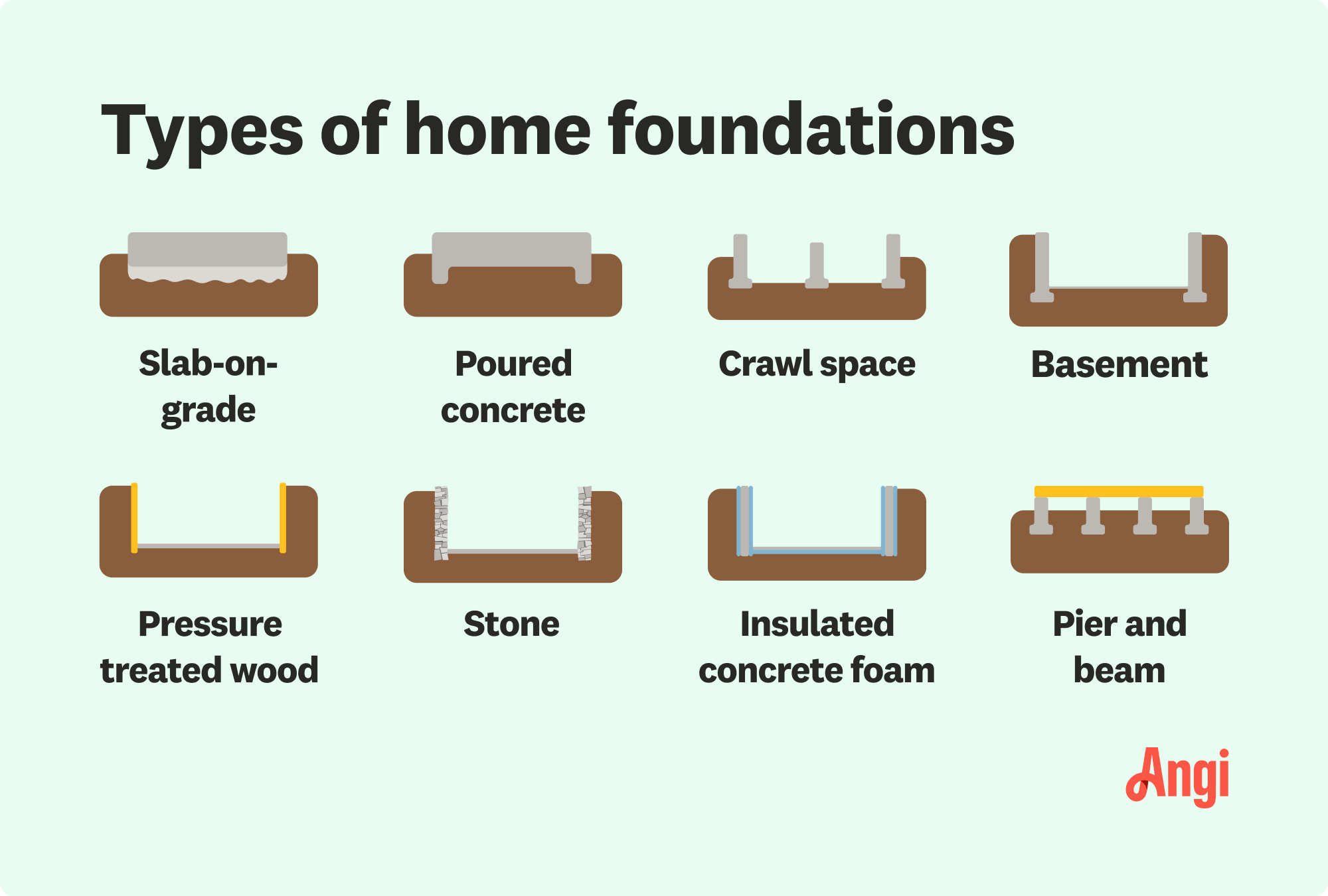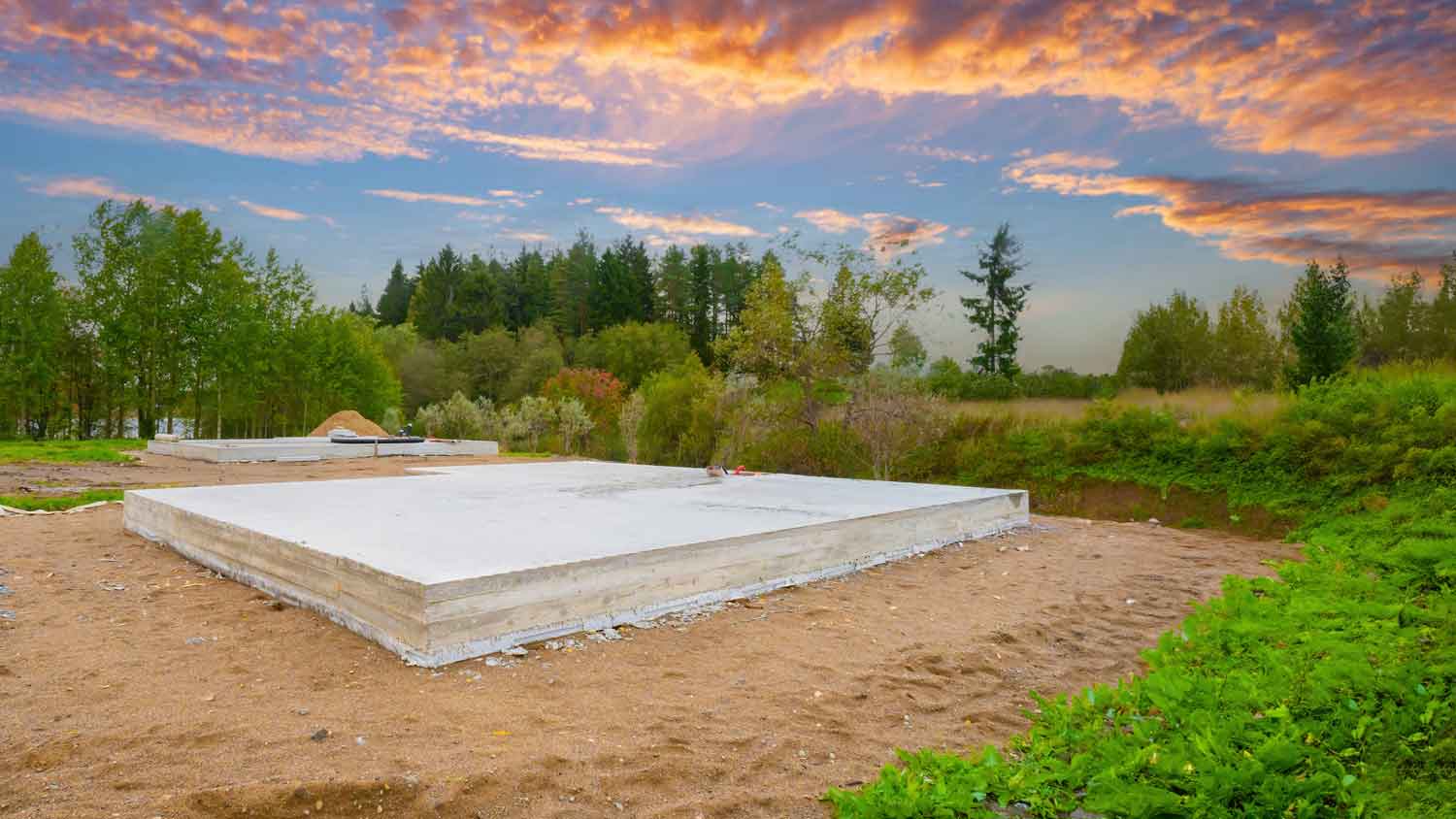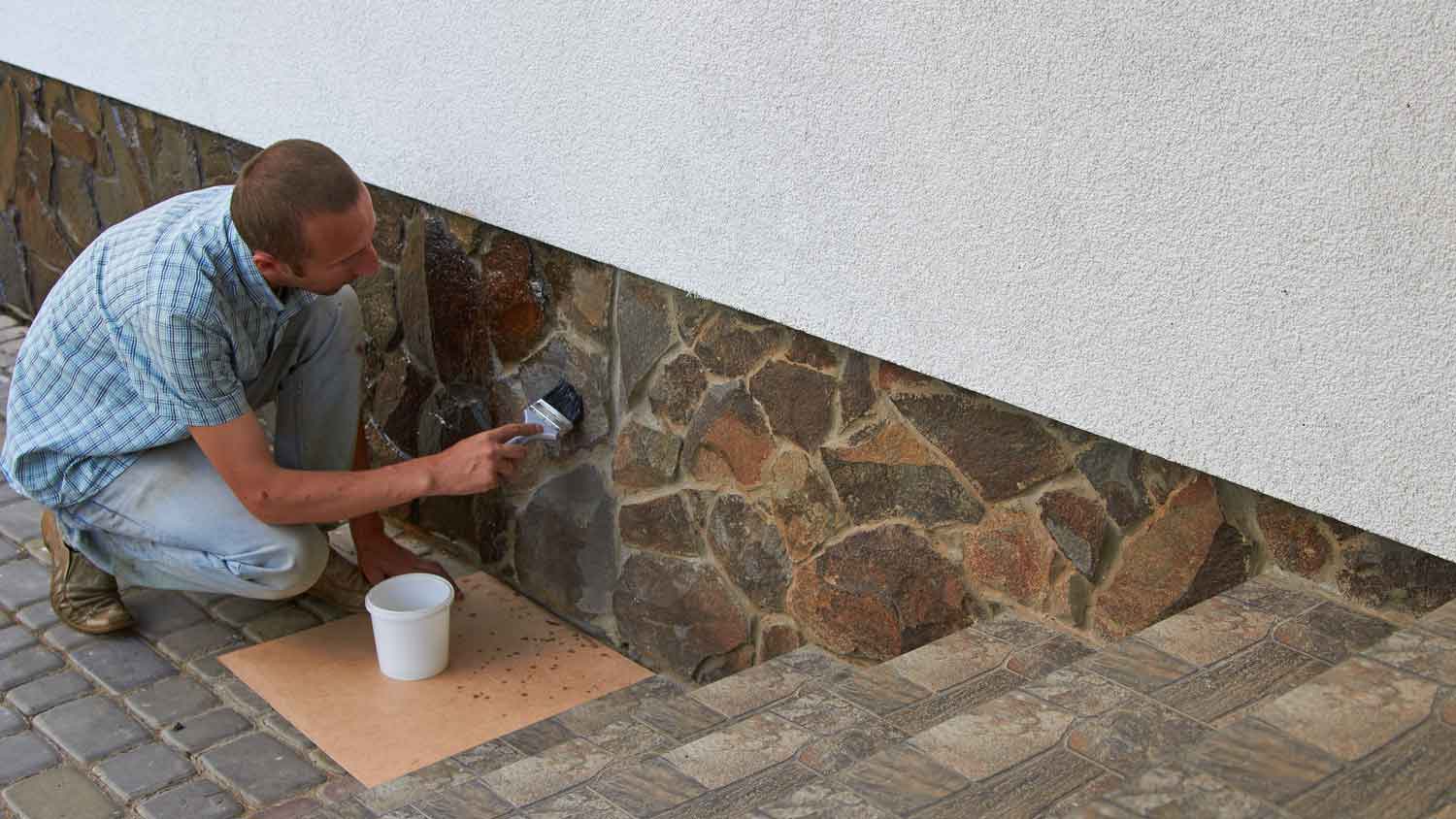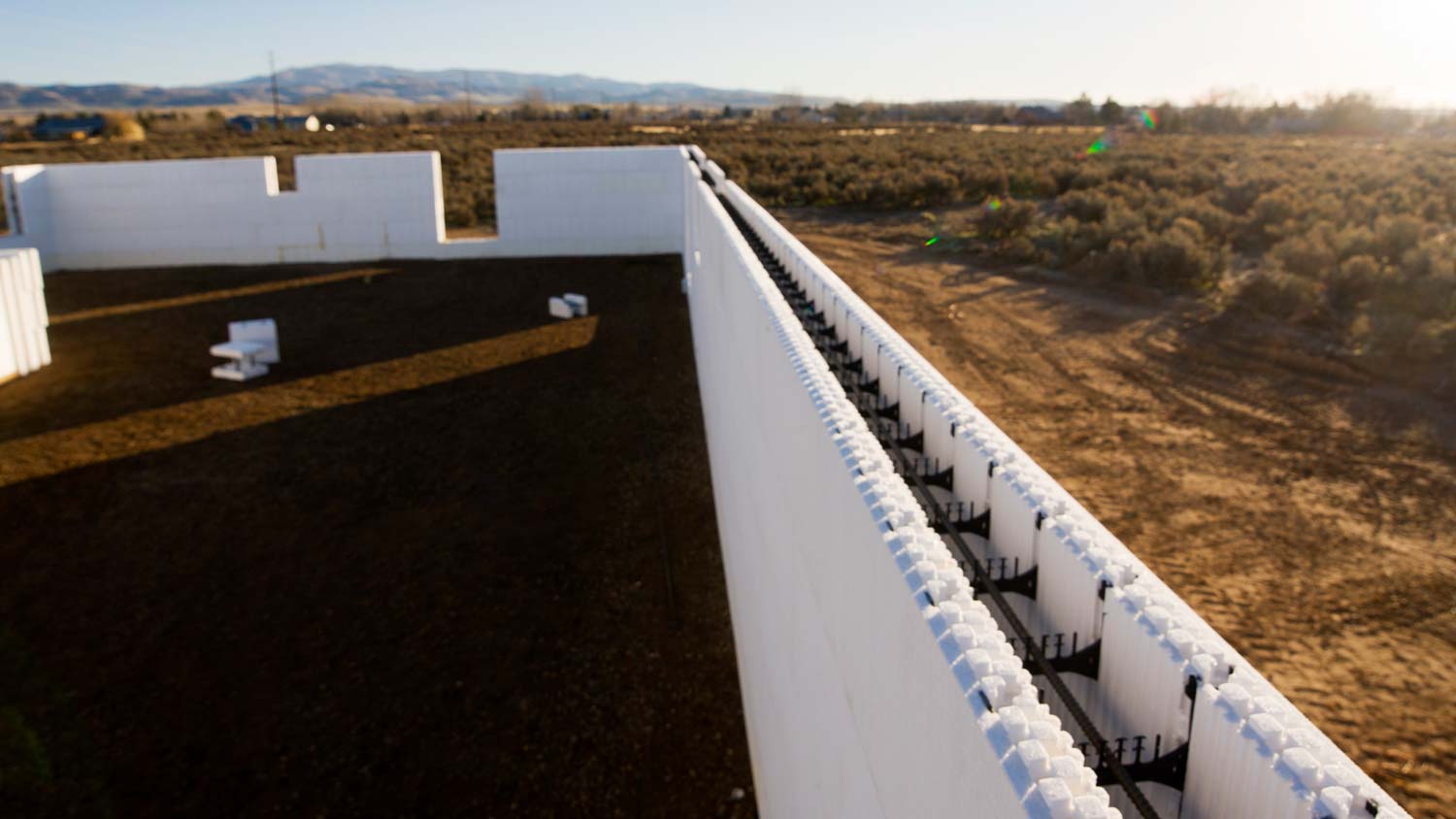
Plumbing leaks are never fun, but they’re worse when they happen inside your foundation. Use this guide to slab leak repair costs to see what you’re up against.
Learn the ins and outs of your home’s home base


A strong, well-built foundation is the cornerstone of a safe and healthy home. For both residential and commercial properties, different foundation types of belowground reinforcement are available—and sometimes offer advantages other materials or designs simply can't.
In this expert guide, we discuss the eight best types of house foundations you can choose for your build, as well as the pros and cons of each style.


Slab-on-grade foundations are the simplest type of home foundation and feature fast construction time, low cost, and minimal excavating or digging to install. A slab-on-grade foundation is typically a 4- to 8-inch-thick single concrete slab pour or monolithic structure. Temporary forms create the slab's shape during construction.
Slab-on-grade foundations are common in warm and moderate climates where long periods of below-freezing weather and frozen ground are unlikely. Typical homes in climates that experience frigid weather aren't good candidates for a slab-on-grade foundation due to frost heave in the winter, which can easily damage the slab.
Standard slab-on-grade foundations require no footings to anchor the structure, and therefore have a lower foundation cost overall. However, in places that experience some freezing, the construction can include shallow footings or an insulating underlayment to protect it from shifting or cracking due to frost heave.
You can tell if your existing home has a slab foundation if it has no crawl space below the living space. From the outside, you won't find any concrete block or poured wall below the exterior siding. The home's mechanicals will be inside the home on the first story, roof, or attic.
| Pros | Cons |
|---|---|
| Low cost | Not ideal for cold climates |
| Quick and easy construction | Reduces access to home systems |
| Ideal for warm climates | No additional living space |
| Avoid moisture issues | |
| Minimal maintenance |
Best For: Homes in warmer climates

A poured concrete foundation consists of solid concrete walls with no seams or mortar. Useful for crawl space or basement-type foundations, these structures offer relatively fast construction times and versatility for use in nearly any climate zone.
Preparing to install a poured concrete foundation requires excavation and installing foundation footings for the home that anchor it to the ground and protect it from shifting due to frost heave or soil movement. The poured concrete foundation rests on the footings. Construction involves form building using plywood or similar material to create a continuous wall, 8 or more inches thick, that creates the home's footprint perimeter. The pour is non-stop from start to finish, resulting in a seamless solid wall resting on top of the home's footings. Contractors will determine the thickness of your foundation based on factors such as soil conditions and your local climate. Poured concrete foundations are popular in newer-construction homes and where concrete masonry units (CMU) or concrete blocks would also be a candidate. Solid concrete walls in your basement or crawl space are a sure sign that your home rests on a poured concrete foundation.
| Pros | Cons |
|---|---|
| Quicker construction than CMU | Requires reinforcement |
| Minimal leak risk | Foot and excavation necessary |
| On-site construction | Installation is weather-dependant |
| More durable than CMU | Form construction can be complex |
Best For: Homes with short construction timelines

Crawl space foundations consist of short CMU or poured concrete walls that rest on deep footings for stability and anchoring. Crawl space walls or stem walls are generally a couple of feet to less than 8 feet tall and often depend on the slope of the ground surrounding the home, and the crawl space floor may be concrete or bare earth.
Crawl space foundations have various stem wall configurations to match the home's construction designs. They offer some extra space to potentially add some of the home mechanical systems and limited storage.
While some crawl spaces vent to the outdoors in warmer climates, the new standard is to leave them without vents to prevent moist air from entering. Crawl space encapsulation is common to prevent moisture damage below the home.
You can look for exterior access panels inside or outside the house and identify the short concrete walls with or without insulation to determine if your home has a crawl space below.
| Pros | Cons |
|---|---|
| Affordable compared to basements | Longer construction |
| Deeper footings for cold climates | Requires excavation |
| Ideal for shallow slopes | Stem wall is labor-intensive |
| Increase storage space | Moisture and pest risk |
Best For: Homes in flood-prone areas

A basement foundation consists of tall walls, at least 8 feet high, resting on solid home footings that create the walls of a basement. It comes in two main types: full basements that are mostly underground and walkout or daylight ones in which one or more basement walls are exterior with outdoor exposure.
The exposed wall in a walkout basement will likely have windows and a door to the outside, while an interior staircase typically acts as the only entrance to a full basement. Basements are common where energy efficiency is a concern and in places requiring deep footing installation to handle freezing conditions.
Basement foundations do double duty by transferring the home's weight to the footings while holding back the surrounding soil and groundwater. This foundation type provides space for additional living areas, home mechanicals, and plenty of storage.
When building a new home and choosing a foundation type, your local concrete foundation company can offer several design styles and information regarding basement construction unique to your geographic location.
| Pros | Cons |
|---|---|
| Ample additional living space | More expensive to build |
| Shelter during extreme weather | Costly repairs and maintenance |
| Can add natural light | Prone to flooding |
| Increases home value | Requires moisture control |
Best For: Homes in cold climates seeking additional space

A pressure-treated wood foundation (PWF) is exactly what the name implies. Chemically treated lumber makes up the home's foundation instead of using poured concrete, blocks, or stone to support the house structure. This foundation type is common in areas too remote or too cold to make concrete foundations practical.
Wood foundations typically elevate the home. The foundation may consist of a crawl space or basement with wood making up the foundation walls, or the space may be open to the air. A PFW foundation is an excellent alternative to other foundation types due to its versatility and ability to insulate.
Identifying a wood foundation under your home is straightforward. Look for wooden piers elevating the home or a crawl space or basement that lacks the presence of concrete.
| Pros | Cons |
|---|---|
| Energy efficient in some climates | Prone to rot and moisture damage |
| Durable and long-lasting | Prone to insect damage |
| Ideal for remote and very cold climates | Difficult to construct |
| Comparatively eco-friendly |
Best For: Remote and very cold climates

While no longer common for use as a home foundation, stone foundation construction was widespread until the early 1900s. A quick peek in your basement or crawl space can tell you if your foundation consists of natural stone instead of uniform concrete blocks.
Stone foundations consist of stones and mortar to hold them in place and are now a potentially elegant design feature. However, these structures are prone to water infiltration, and their maintenance requirements can be costly.
| Pros | Cons |
|---|---|
| Add classic style to historic home | High maintenance costs |
| Durable when well maintained | Prone to pest and moisture issues |
| Adds resale value in some cases | Required a specialized contractor |
Best For: Pre-1900 historic homes

A relatively new kid on the block, insulated concrete form (ICF) foundations consist of insulated forms that contain poured concrete that remain in place after the concrete cures. Like a poured concrete foundation, these structures rest on buried footings that anchor the home to prevent movement.
ICF foundations offer higher energy-efficiency ratings than traditional ones. In addition to integrated insulation, ICFs are great at resisting moisture and pest intrusion while being at least as durable as a standard poured concrete foundation.
Common places to find ICF installations include any place where basements or crawl spaces are the norm. You can identify an ICF foundation by recognizing the exterior covering of rigid insulation on both the interior and exterior of the basement walls or crawl space stem walls.
| Pros | Cons |
|---|---|
| Permanent insulation layers | Higher construction costs |
| No dismantling during construction | Extensive excavation |
| Resistant to moisture and pests | Specialized contractor required |
| Durable in cold climates |
Best For: Home with extreme freeze-and-thaw cycles

Common in coastal areas where flooding is a constant threat, pier and beam foundations elevate the house above the danger. Pier and beam foundations consist of wooden or concrete piles or piers that support beam structures to provide a place for the home's construction. Large machinery drives the piers deep into the soil for structural support before putting the beams and home on top.
Depending on the flood threat, homes on pier and beam foundations might be just a few feet above ground-level or high enough to create automobile parking and storage capacity beneath the house. While many homes with a pier and beam foundation simply leave the underside open, creating an enclosed crawl space below the house is straightforward and common in places with lower flood threats.
If your home has a crawl space with several vertical posts supporting the floor above, it likely has a pier and beam foundation.
| Pros | Cons |
|---|---|
| Protected from flooding | Heavy machinery required |
| Limited excavation | No crawl space envelope |
| Ideal for sloped areas | Prone to rot over time |
| Increases home access |
Best For: Coasted homes in high-risk flood zones
Collaborating with an experienced local foundation contractor is the best way to choose a foundation tailored to your home. Your architect, general contractor, and local foundation building codes will all dictate your options. The primary factors that will help you and your design team decide include:
The foundations common beneath homes in your area
Your local climate and the soil composition
The size and design of your home
Your budget during the home build
Long-term foundation maintenance costs
Flood, pest, and moisture risks in your area
Whether you require additional storage space
Materials available in your region
The common life span of foundation types in your area
The foundation of your home is undoubtedly one of the most important decisions to ensure your home's structural health.
From average costs to expert advice, get all the answers you need to get your job done.

Plumbing leaks are never fun, but they’re worse when they happen inside your foundation. Use this guide to slab leak repair costs to see what you’re up against.

A foundation for a new-build home averages around $11,000. Find out all the factors that affect the cost of a foundation and how to save money.

A bowing basement wall needs immediate repair. Learn how much it costs to repair a bowing basement wall and what factors can affect the final price tag.

All foundations settle, but some can develop related structural issues. Use this guide to identify foundation settlement and determine when to take action.

Raised foundations are a good choice for homes in areas prone to flooding or on uneven ground. Learn if a raised foundation is right for your home.

Keeping your home structurally sound is essential for your safety. Discover 4 methods for block foundation repair and which is right for your home.